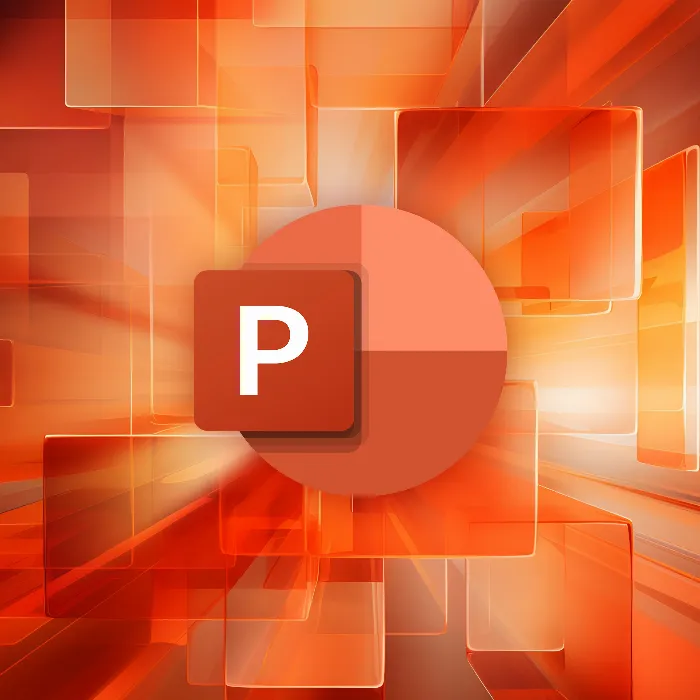In this guide, you will receive comprehensive information about the Presenter View of PowerPoint, which functions as your "master cockpit" during the presentation. This feature provides you with numerous tools to make your presentation more interactive and effective. You will learn how to save important annotations, switch screens, and make optimal use of the note function. These steps will not only make presenting easier for you but also help you appear more professional.
Main Insights
- The Presenter View allows for control over the presentation through separate screens.
- Important hotkeys for laser pointer, marker, and pen enhance daily efficiency in presentations.
- The note function serves as a helpful "cheat sheet" during the presentation.
Step-by-Step Guide to Using the Presenter View
Step 1: Activate Presentation View
To access the Presenter View, you first need to activate the Presentation View. This is done when using PowerPoint with multiple screens. Make sure you have connected your presentation screen as well as a second screen, e.g., a monitor or projector. You will immediately see the Presenter View appear.
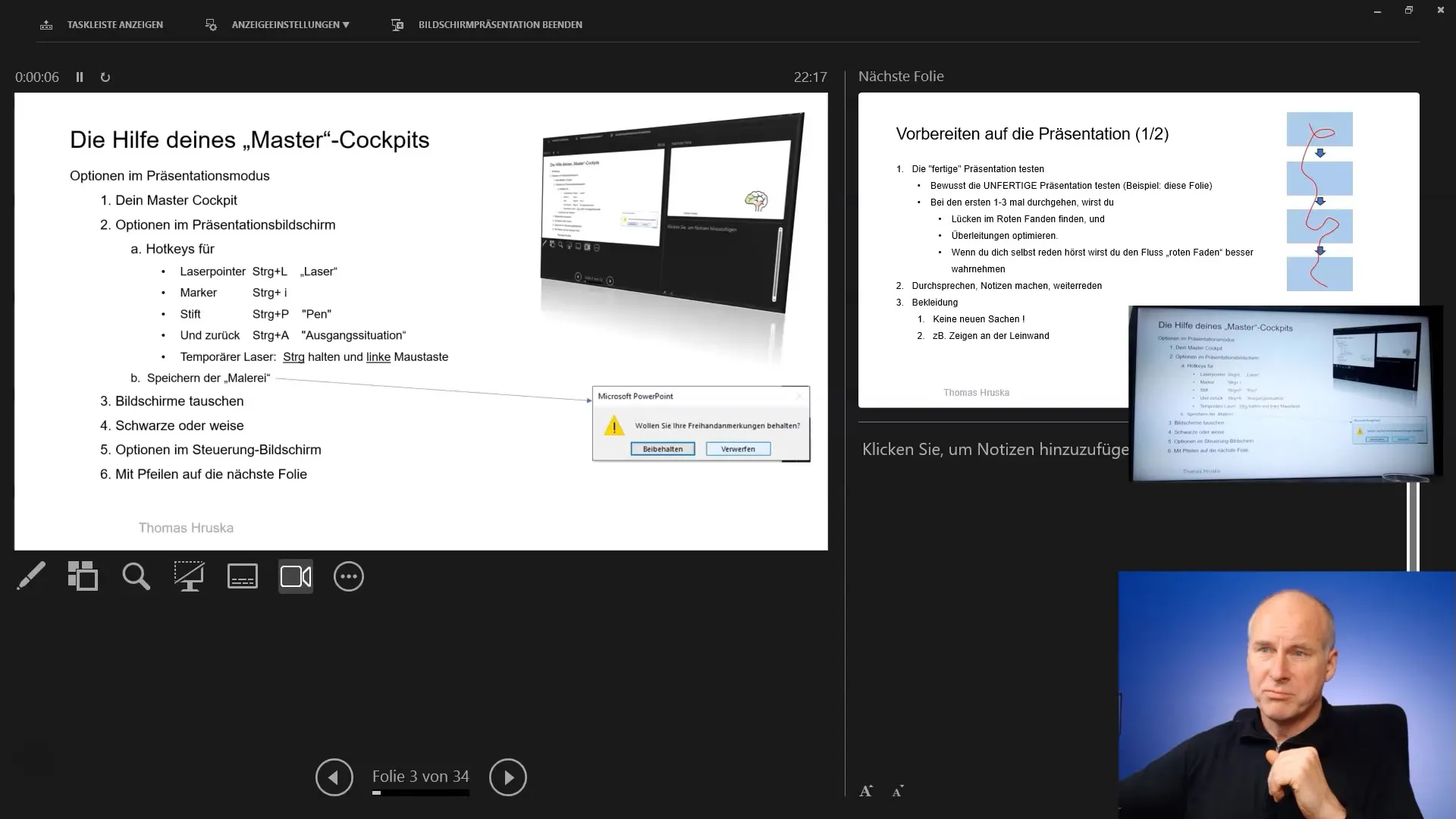
Step 2: Understanding the User Interface
In the Presenter View, you will see various information to assist you during the presentation. On one side, you have your slide view, and on the other side, you can see your notes. In contrast, the audience only sees the slides on the presentation screen.
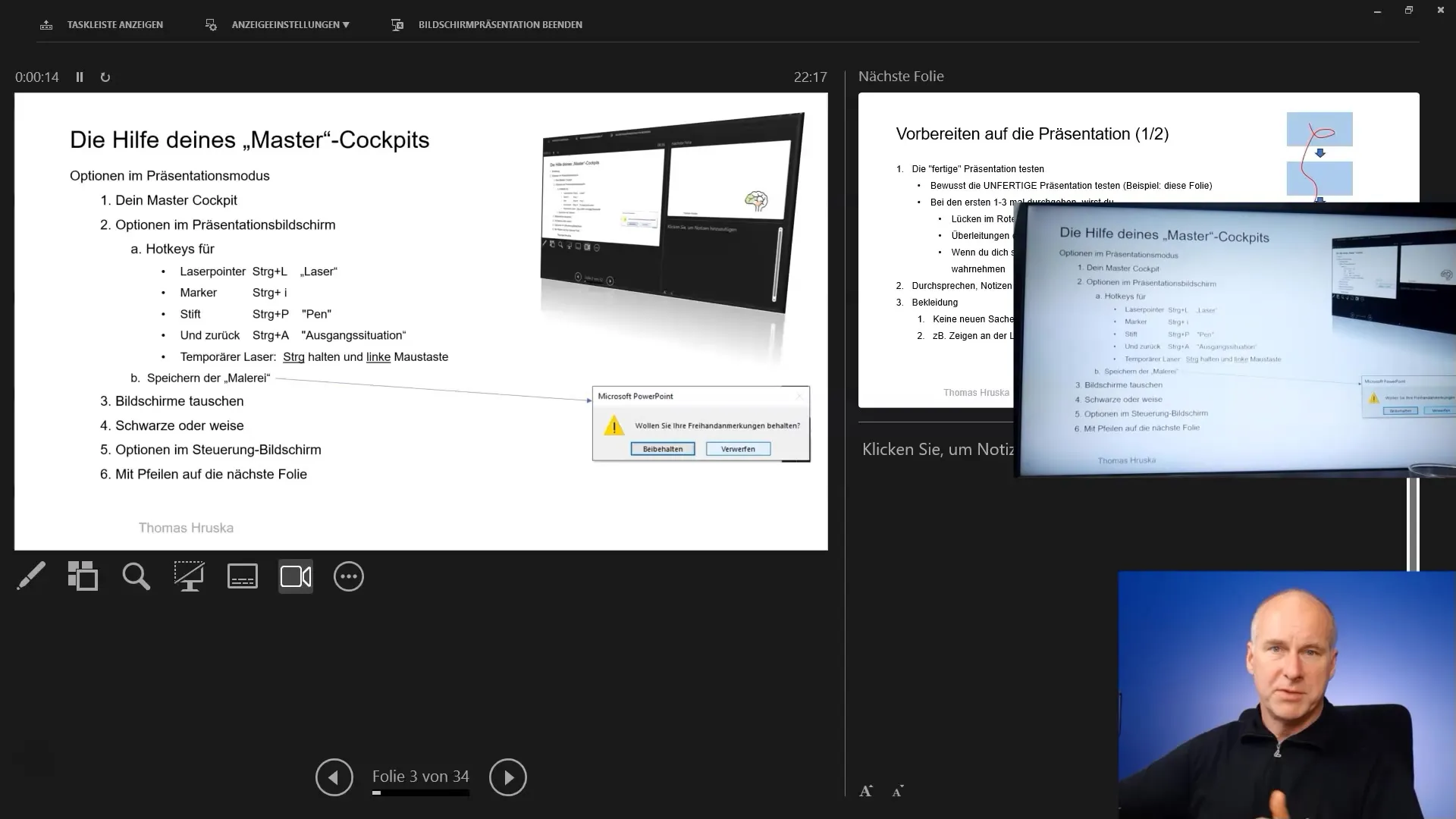
Step 3: Learning Important Hotkeys
To effectively control your presentation, you should remember the most important hotkeys:
- Activate laser pointer: Ctrl + L
- Perform markings: Ctrl + I
- Draw with pen: Ctrl + P
- Return to initial position: Ctrl + A
These key combinations will help you navigate quickly during the presentation and highlight important points.
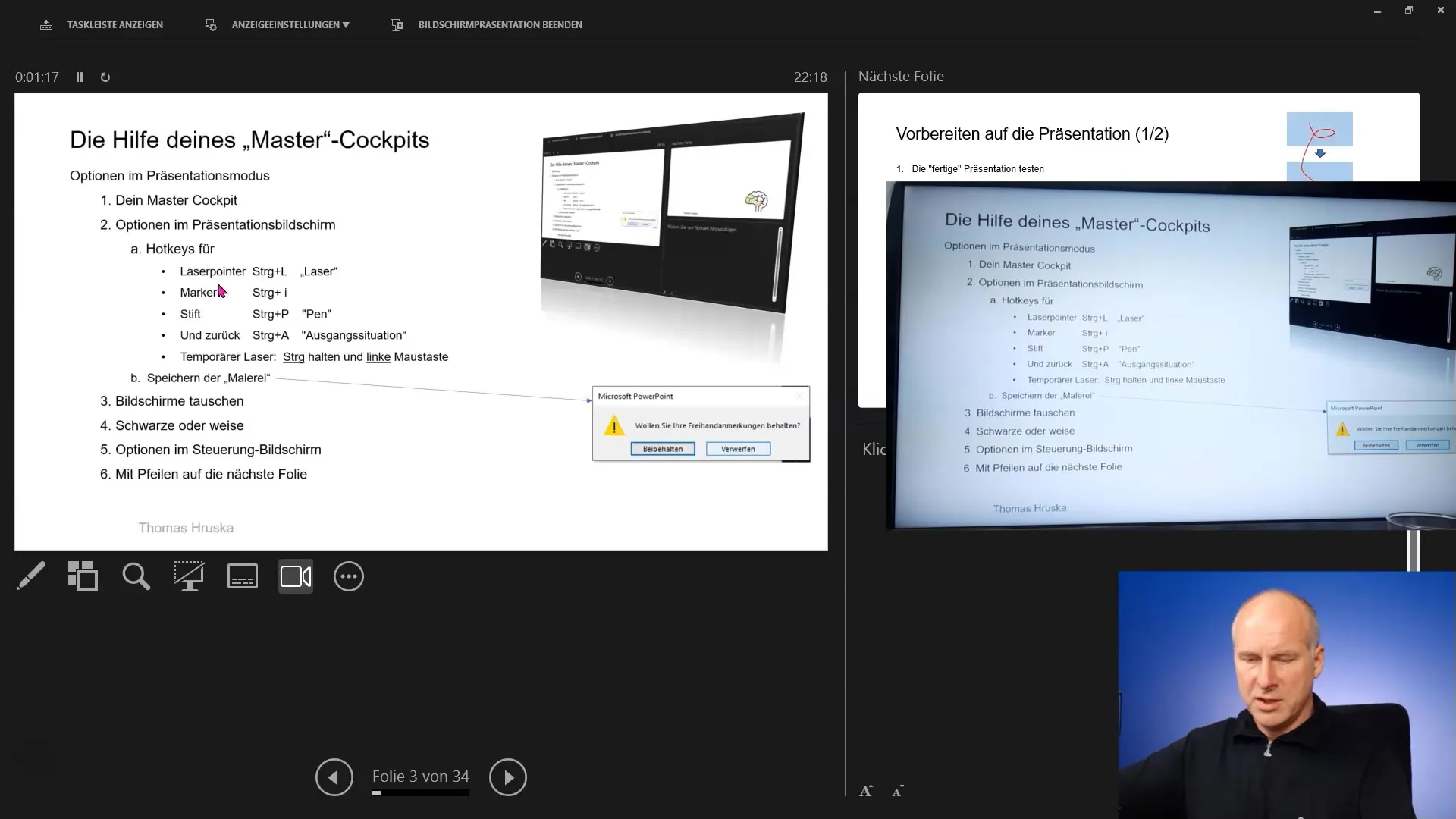
Step 4: Customize Presentation Options
In the Presenter View, there are various options you can use. You have the option to switch between different screens or duplicate them. This is particularly useful if you want your audience to see exactly what you are viewing on the presentation screen.
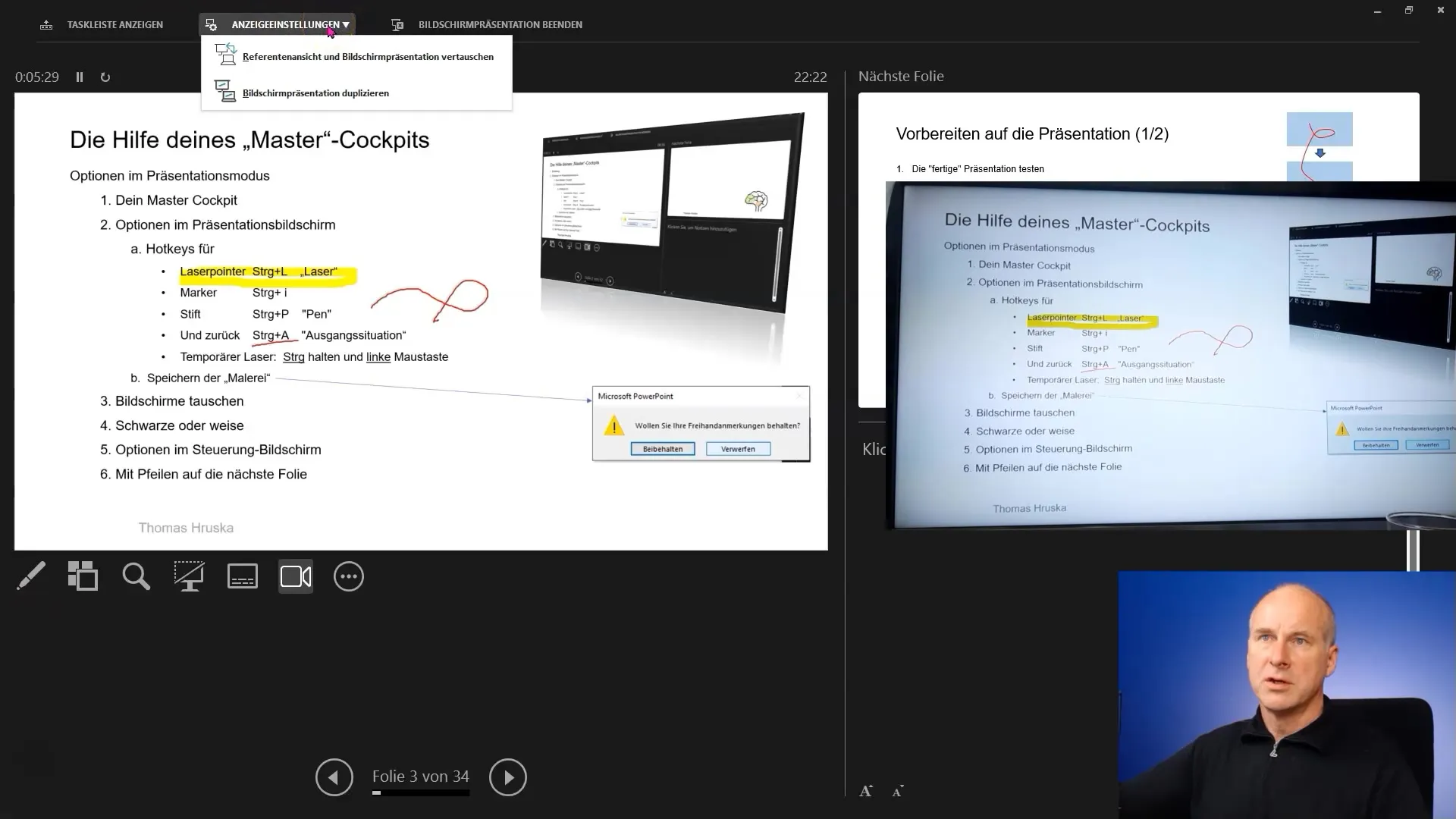
Step 5: Use Annotation and Drawing Functions
If you want to highlight something during the presentation, you can use the marker (Ctrl + I) and pen (Ctrl + P). This allows you to visually emphasize important information.
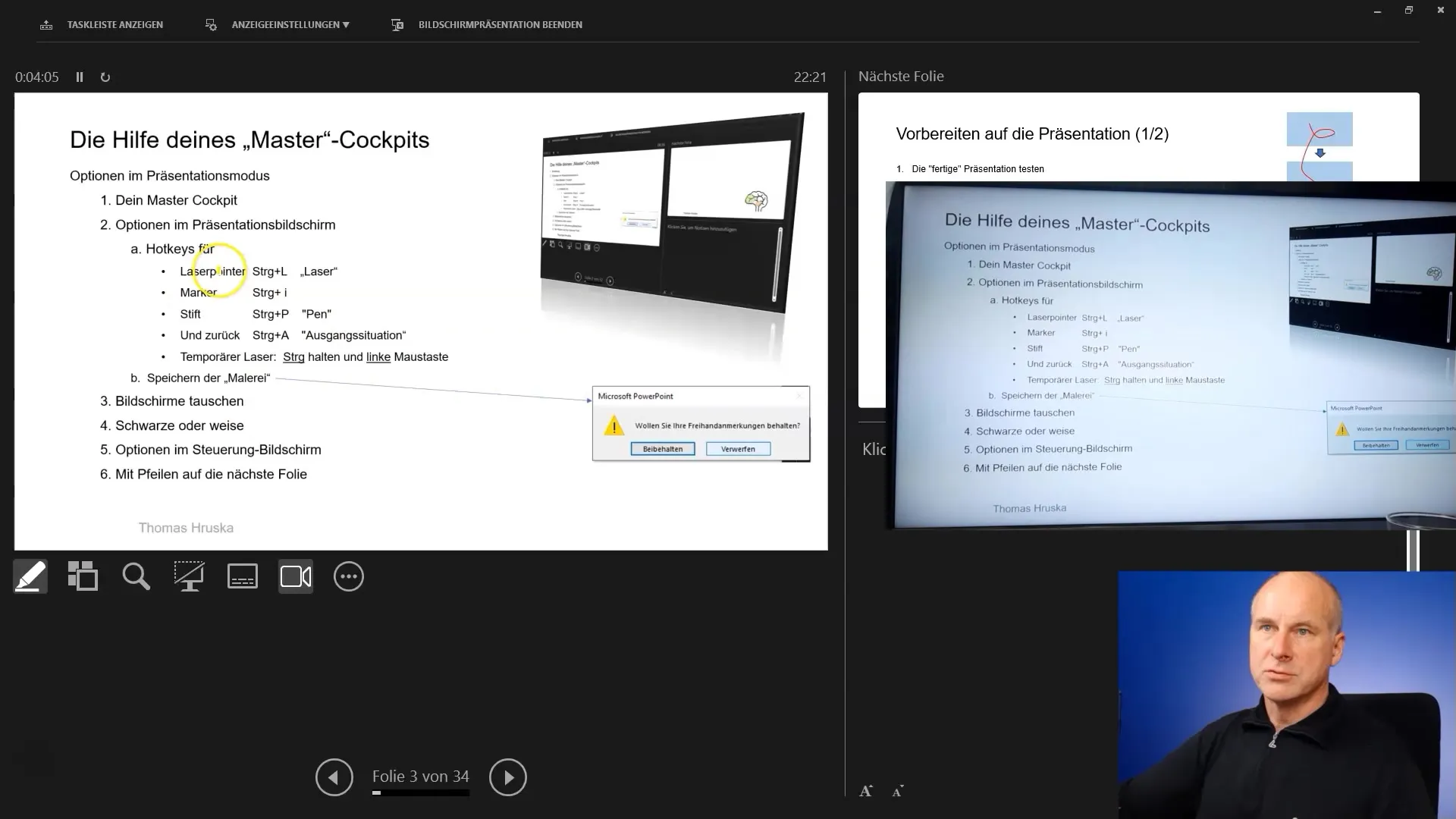
Step 6: Utilize Temporary Laser Pointer
The temporary laser pointer can be activated by holding down the control key and clicking with the left mouse button. This allows you to point out what is important on the screen in real-time without it remaining visible permanently.
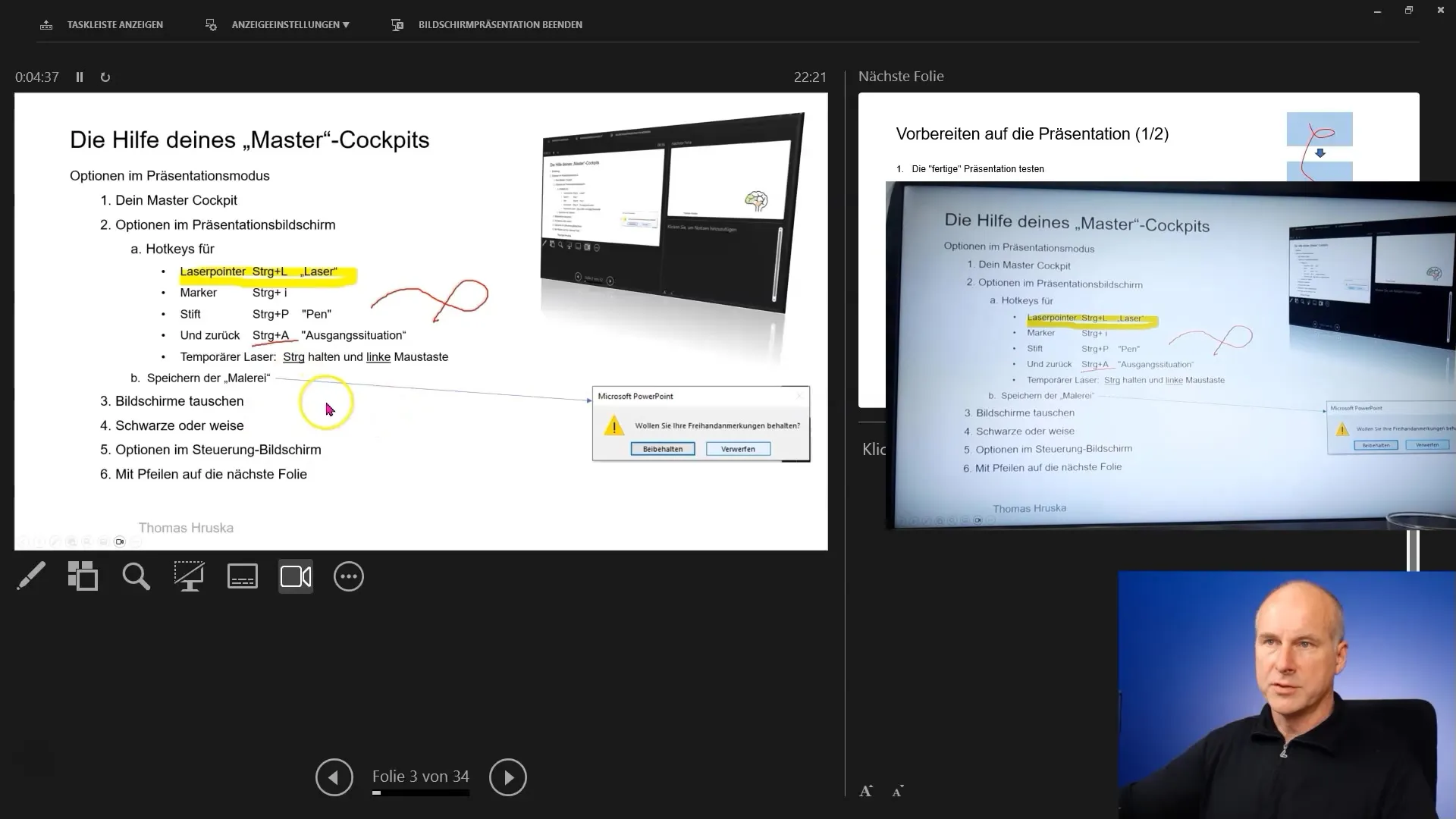
Step 7: Using the Note Function
The note function is one of the most powerful tools in the Presenter View. Here you can write keywords or important information during the presentation. This is particularly useful when you want to mention details that you may not remember.
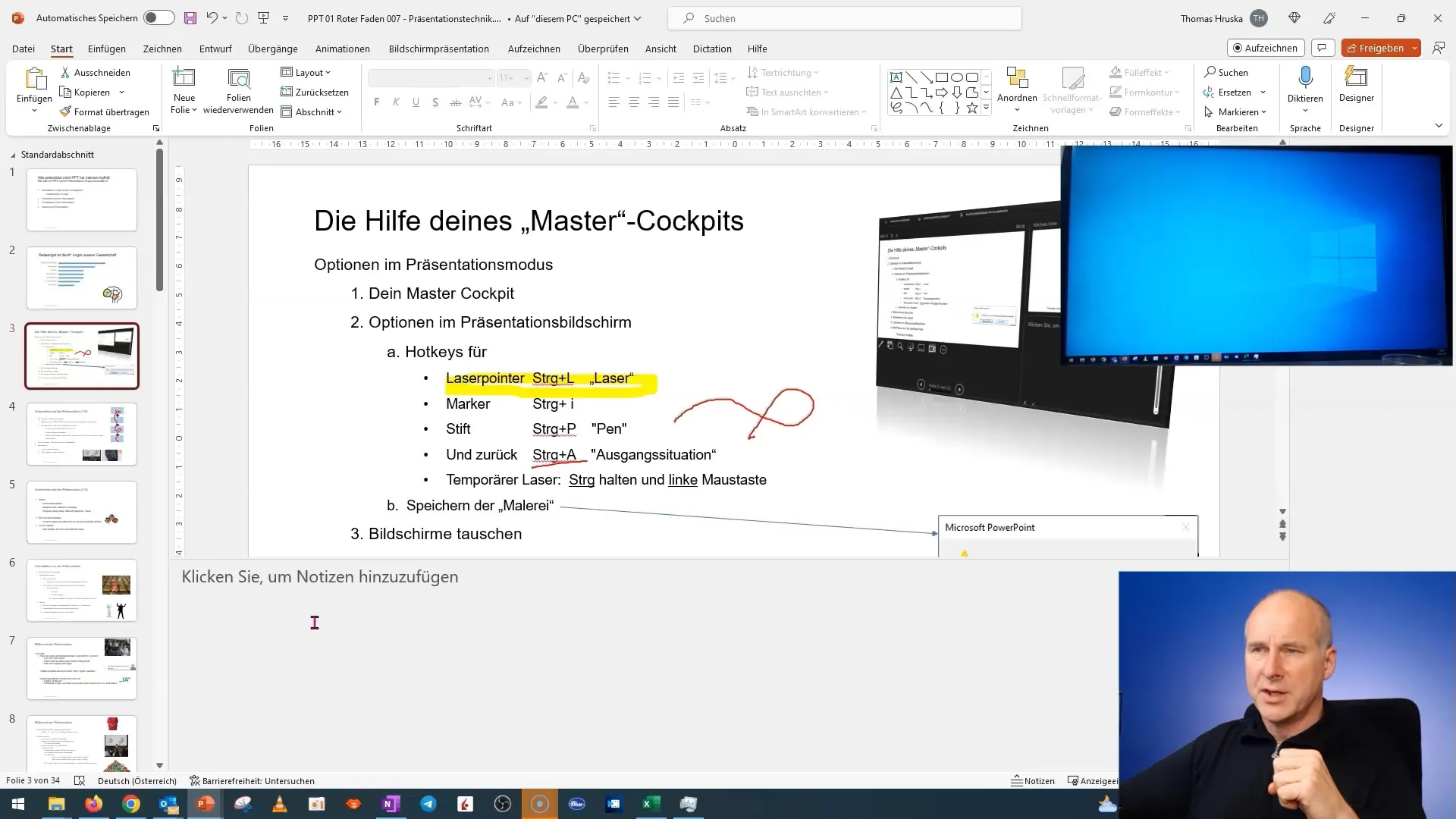
Step 8: Explore Saving Options
When you finish the presentation, you will be asked if you want to save your annotations and notes. Choose "Yes" or "No" depending on whether you want to keep this information for future presentations.
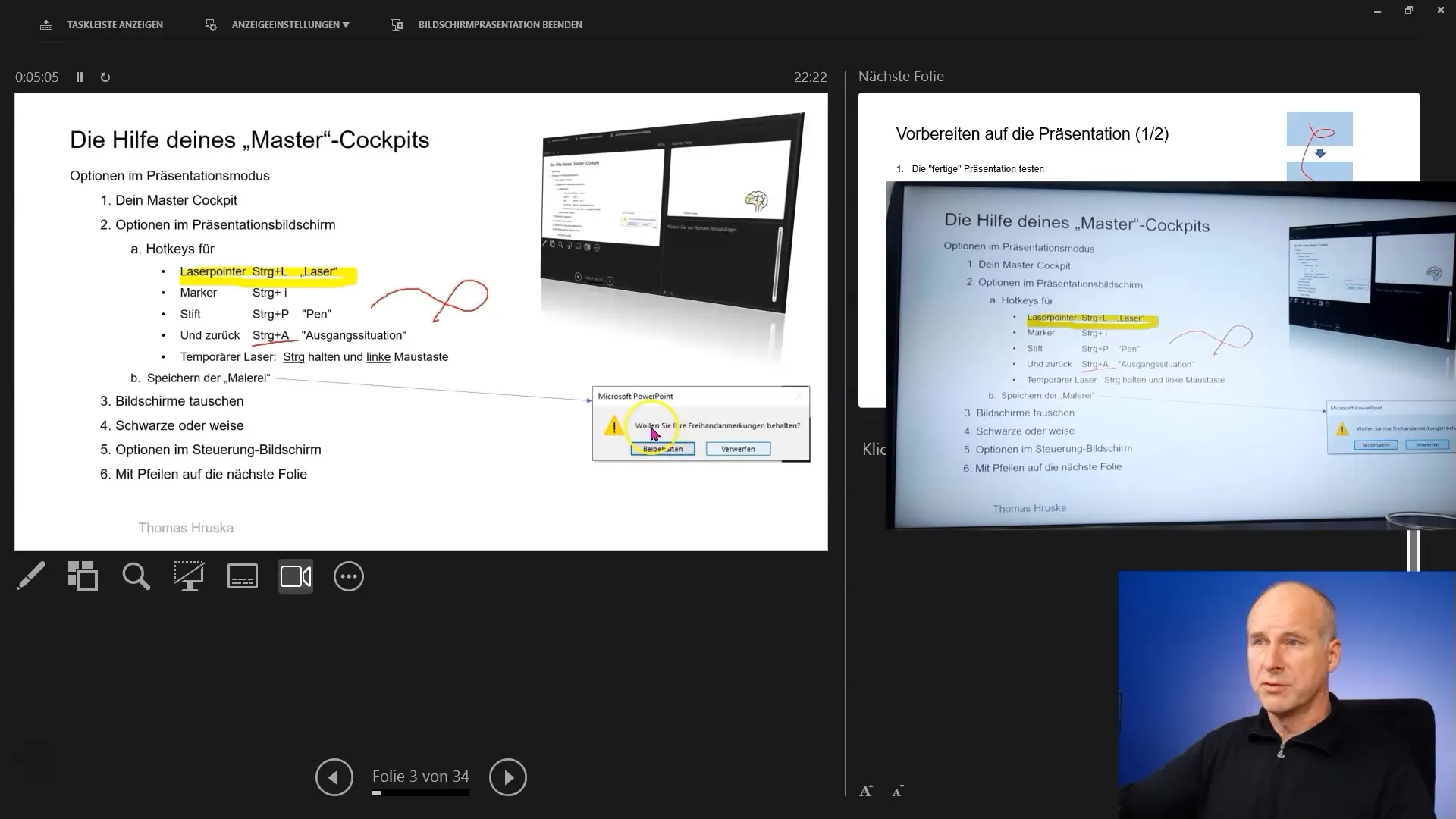
Step 9: Using a black or white screen
Another option available to you is the choice between a black or white screen to give your audience a short break or focus their attention.
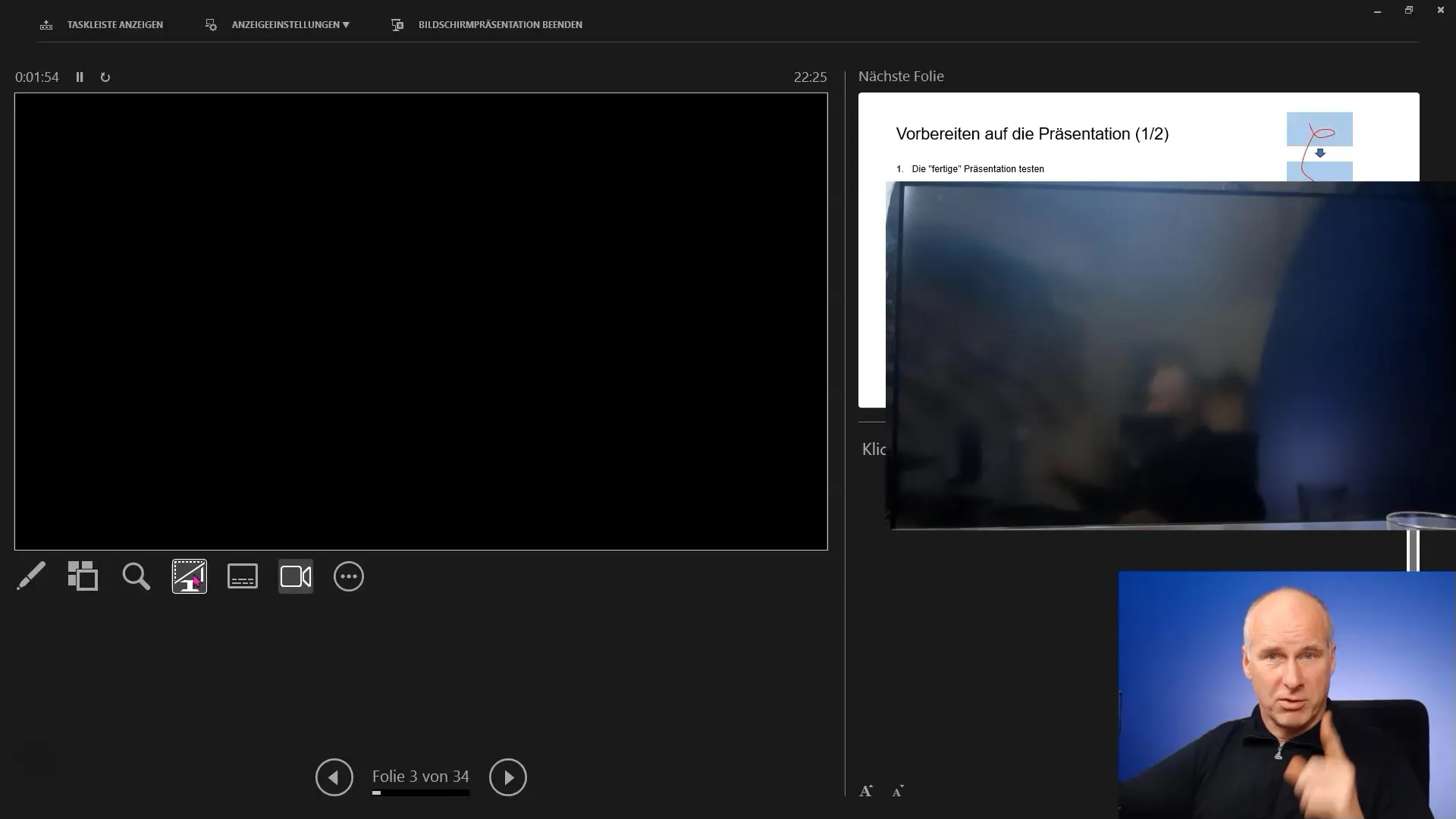
Step 10: There are more features to discover
In addition, in the presenter view, you may have access to further options such as subtitles, a camera setting, and other personalized functions. These can help you further enhance and professionalize your presentation.
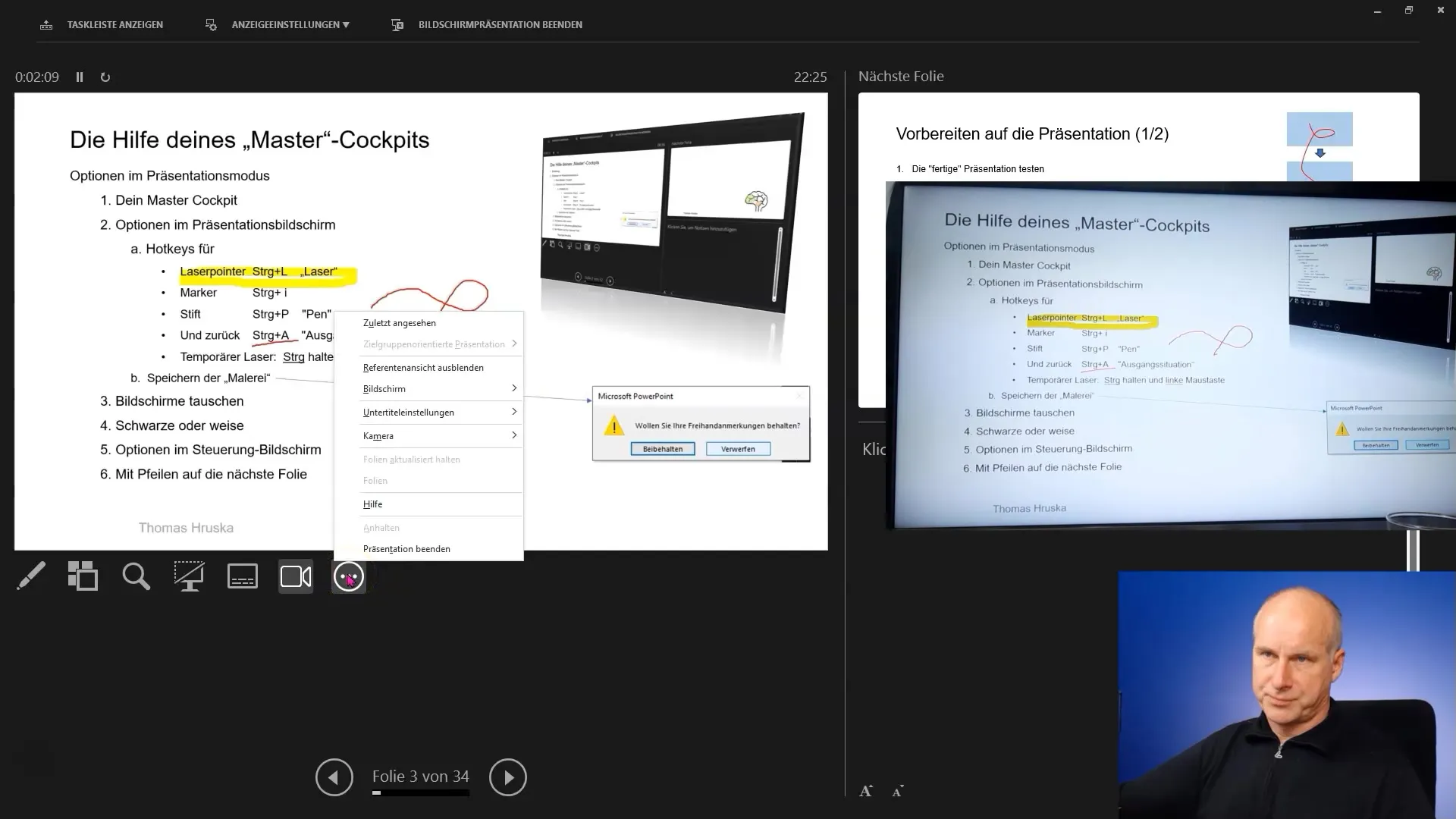
Summary
In this guide, you have received comprehensive information on PowerPoint's presenter view and learned how to use it effectively. With the described steps, you can actively control and optimize your presentations. Your skills in using these features will help you make your presentations more successful and appear more professional.
Frequently Asked Questions
How do I activate the presenter view?The presenter view is automatically activated when using PowerPoint with multiple screens.
What are the key hotkeys for the presenter view?Important hotkeys are: Ctrl + L for the laser pointer, Ctrl + I for annotations, and Ctrl + P for the pen.
How do I use the note function during the presentation?You can take notes during the presentation to jot down important information to help you keep track.
Can I switch my screen during the presentation?Yes, you can switch between screens or duplicate them to have an identical display on both screens.
Is there a way to save my annotations?Yes, you will be asked after ending the presentation if you want to save your annotations and notes.
